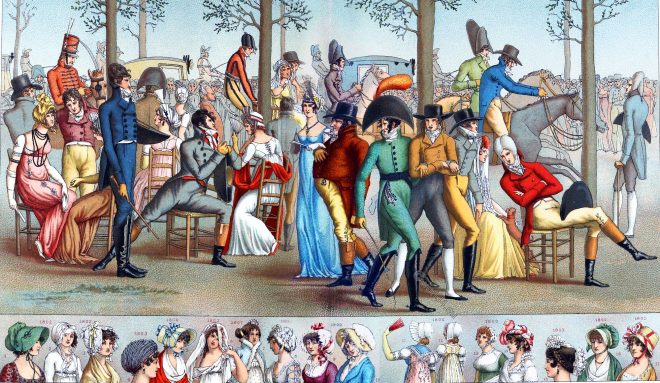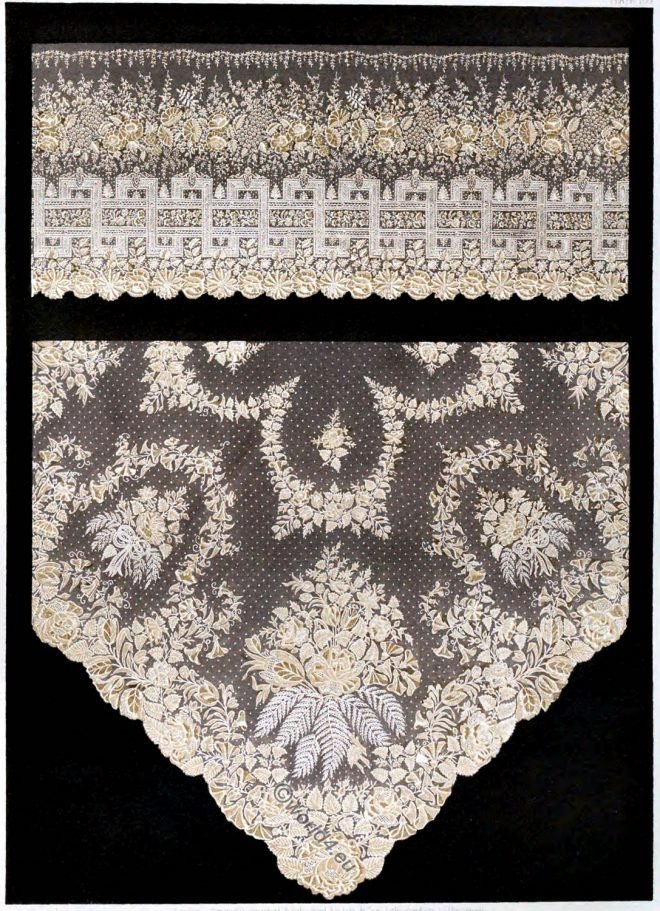The figures are all taken from fashion journals. The period includes the last period of the convent, the rule of the board of directors and the beginning of the consulate.
Category: 19th Century
France. At the horse race at the Promenade de Longchamp. 1802.
France. The fashions under the consulate. Fashionable Parisians enjoy a beautiful spring day at the horse race at the Promenade de Longchamp in 1802.
Italy. Folk costumes in the Provinces of Rome and Ancona.
In the surroundings of Rome the picturesque costume of the contadini (farmers) has almost disappeared. Only occasionally do you see entire families of country dwellers in national costumes on the streets.
The fashions of the end of the 18th century. After German Journals.
Europe. 18th century. The French influence. Under the reign of terror, the development of fashions began and reached perfection under the direction of the Directorate.
Dress of a Fisherman from Hastings in England, 19th c.
HASTINGS FISHERMAN. The fishermen are a bold, hardy class of men, and necessarily exposed to great fatigues and dangers in the winter months
Sidney Herbert, 1st Baron Herbert of Lea. Probably painted in 1847.
Sidney Herbert, 1st Baron Herbert of Lea. This is probably the portrait painted in 1847, and exhibited at the Royal Academy the same year, the replica of which is now at Herbert House.
Sarah Baro Bolcher. An African Princess in Topsfield.
The princess, who gave her name as Sarah Baro Colcher, was given to Captain Dodge who brought her home to his sister, Mrs. Elizabeth Dodge Conant, in Topsfield, Essex County, Massachusetts, USA.
China. The Empress. A concubine and a servant. Furniture.
Empress of China with a diadem and long pendants. A concubine and a servant. Interior. Furniture.
London Nomads at Battersea. Victorian Street Life.
Photo of “London Nomads” – Gypsies around the steps of a caravan. The group includes William Hampton and Mary Pradd, taken at Battersea by John Thomson.
About the fineness and beauty of Lace design from Brussels.
The best Brussels lace is noted for its extraordinary fineness and beauty of design. It is made of flax grown in the neighborhood of Hal and Rebeeque, and is classed… Read More










